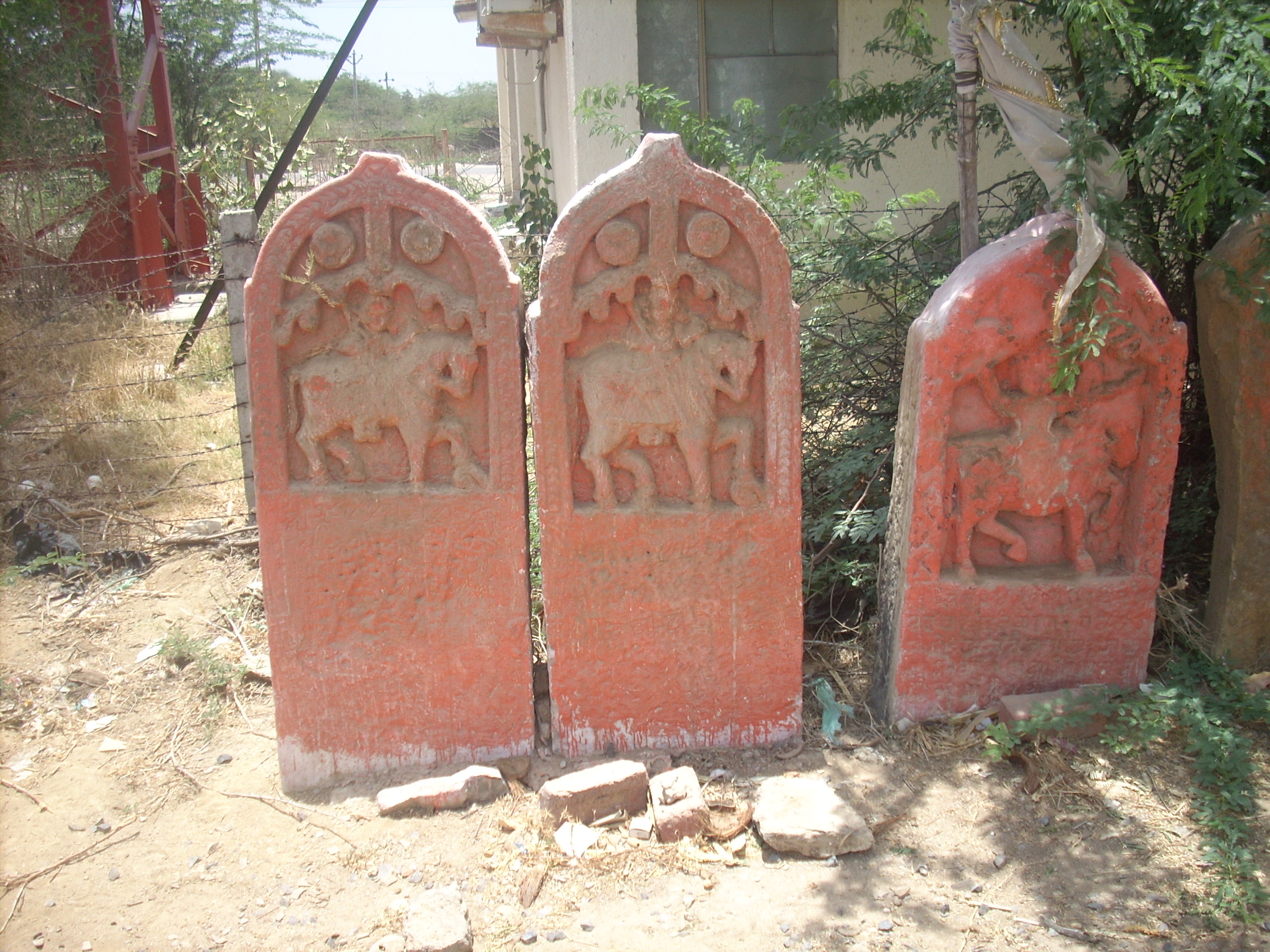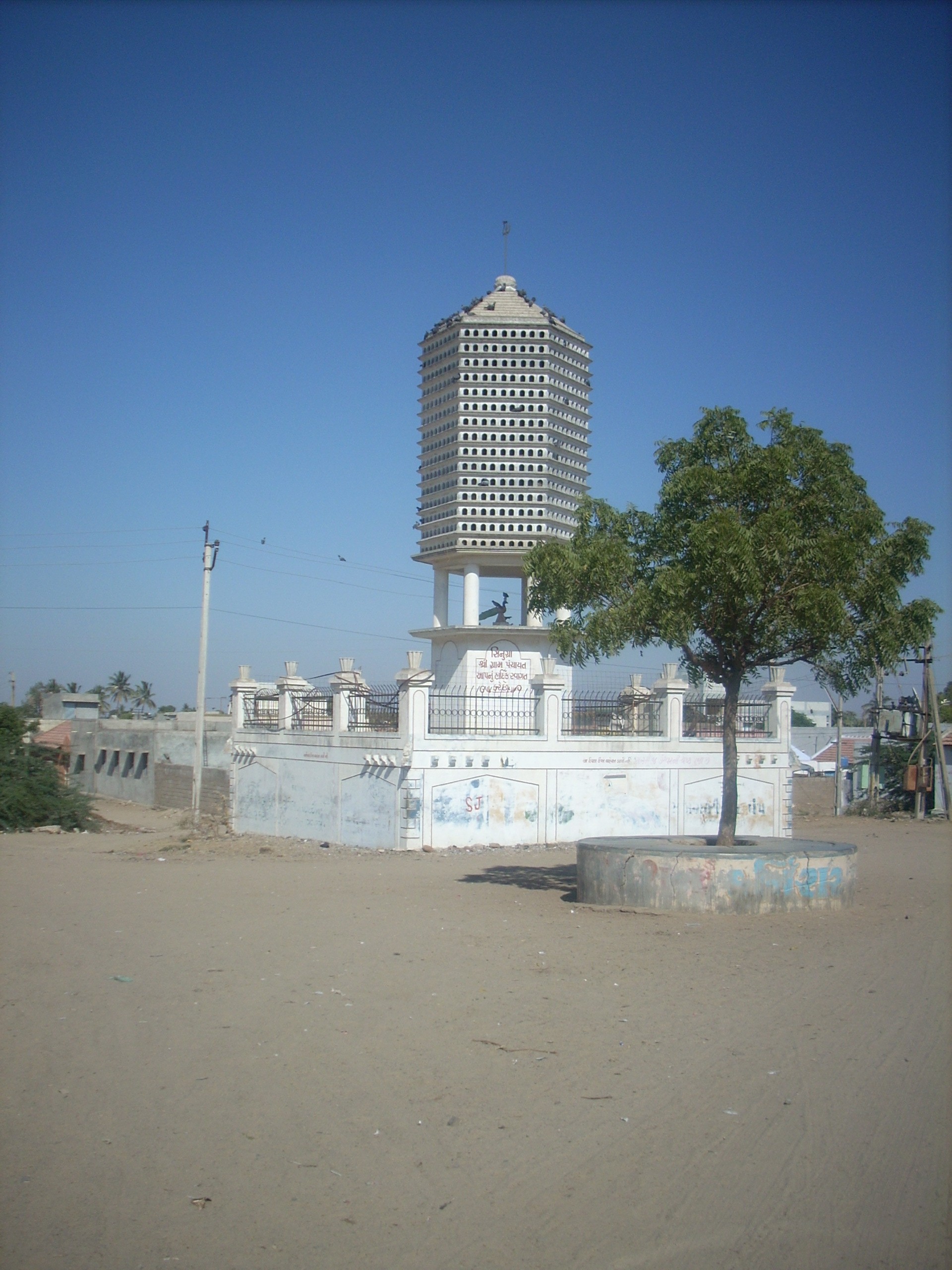|
Madhapar
Madhapar is a village located in Kutch district in the state of Gujarat, India. It is one of the richest villages in India in terms of bank deposits. The village has around 7600 households and 2000 crore Indian rupee worth bank deposits. History Madhapar is one of the 18 villages established by the Mistris of Kutch. In the 12th century, many people of this community also known as Kutch Gurjar Kshatriyas moved into a village named Dhaneti and later settled between Anjar and Bhuj. Madhapar is named after Madha Kanji Solanki who had shifted from the Dhaneti village to Madhapar in the year 1473–1474 (VS 1529). Madha Kanji was the third generation of Hemraj Hardas of Solanki dynasty of Gujarat, who moved from the Halar region to Dhaneti and then to Madhapar.Kutch Gurjar Kshatriya Community : A brief History & Glory:by Raja Pawan Jethwa. (Kolkata, 2007). Section II: Mileage wise available Details of Railway lines laid.Pages:63 to 70 This early Madhapar today is known as Juna Vaas ... [...More Info...] [...Related Items...] OR: [Wikipedia] [Google] [Baidu] |
Kutch Gurjar Kshatriyas
Kutch Gurjar Kshatriya (also known as Mistri or Mestri) are a minority Hindu and one of the Socially and Educationally Backward communities of Gujarat in India, who claim to be Kshatriyas. They are an artisan community related with Kadia works. They are also known as the Mistri or Mistris of Kutch.Mistri Encyclopaedia of Backward Castes By Neelam Yadav Page 316. History [...More Info...] [...Related Items...] OR: [Wikipedia] [Google] [Baidu] |
Mistris Of Kutch
Kutch Gurjar Kshatriya (also known as Mistri or Mestri) are a minority Hindu and one of the Socially and Educationally Backward communities of Gujarat in India, who claim to be Kshatriyas. They are an artisan community related with Kadia works. They are also known as the Mistri or Mistris of Kutch.Mistri Encyclopaedia of Backward Castes By Neelam Yadav Page 316. History [...More Info...] [...Related Items...] OR: [Wikipedia] [Google] [Baidu] |
Bhuj
Bhuj () is a Municipality and District Headquarters of Kutch District in the state of Gujarat, India. Etymology According to legend, Kutch was ruled by the Nāga chieftains in the past. Sagai, a queen of Sheshapattana, who was married to King Bheria Kumar, rose up against Bhujanga, the last chieftain of Naga. After the battle, Bheria was defeated and Queen Sagai committed sati. The hill where they lived later came to be known as Bhujia Hill and the town at the foothill as Bhuj. Bhujang was later worshiped by the people as snake god, '' Bhujanga'', and a temple was constructed to revere him. History Bhuj was founded by Rao Hamir in 1510 and was made the capital of Kutch by Rao Khengarji I in 1549. Its foundation stone as state capital was formally laid on Vikram Samvat 1604 Maagha 5th (approx. 25 January 1548). From 1590 onwards, when Rao was forced to acknowledge the Mughal supremacy, Bhuj came to be known as Suleiman Nagar amongst Muslims. The city's walls were built by ... [...More Info...] [...Related Items...] OR: [Wikipedia] [Google] [Baidu] |
Dhaneti
Dhaneti or Dhanetee is a village in Bhuj Taluka of Kutch District of Gujarat State of India. It is at a distance of about 26 km from Bhuj the Taluka and district headquarters of Kutch. Although it is in Bhuj Taluka, the Anjar Taluka headquarters of Anjar is only 18 km away. History About the history of Dhaneti, the village holds a special place in annals of Kutch Gurjar Kshatriyas or Mistris of Kutch, who entered Kutch and fought a battle on the land of the Dhaneti village in late 12th Century around 1177–78 A.D. (V.S. 1234) and got themselves established and settled at this village under leadership of Patel Ganga Maru.Kutch Gurjar Kshatriya Community : A brief History & Glory: by Raja Pawan Jethwa. (2007) Calcutta. Even today, intricate ''paliyas'' or memorial stones of their ''dadas'' or ''shurapuras'' (the ancestors who died while fighting) and ''deris'' (pyre alters) of their ''Satis'' are standing there near village pond and other areas of village, as a mu ... [...More Info...] [...Related Items...] OR: [Wikipedia] [Google] [Baidu] |
Cutch State
Cutch, also spelled Kutch or Kachchh and also historically known as the Kingdom of Kutch, was a kingdom in the Kutch region from 1147 to 1819 and a princely state under British rule from 1819 to 1947. Its territories covered the present day Kutch region of Gujarat north of the Gulf of Kutch. Bordered by Sindh in the north, Cutch State was one of the few princely states with a coastline. The state had an area of and a population estimated at in 1901. During the British Raj, the state was part of the Cutch Agency and later the Western India States Agency within the Bombay Presidency. The rulers maintained an army of 354 cavalry, 1,412 infantry and 164 guns. Cutch's flag was a red rectangle with images of a white elephant and Bhujia Fort in the centre and the word BHOOJ inscribed above the fort in white. The motto: ''Courage and Confidence'' was written below in a white ribbon. History A predecessor state known as the Kingdom of Kutch was founded around 1147 by Lakho Ja ... [...More Info...] [...Related Items...] OR: [Wikipedia] [Google] [Baidu] |
States And Territories Of India
India is a federal union comprising 28 states and 8 union territories, with a total of 36 entities. The states and union territories are further subdivided into districts and smaller administrative divisions. History Pre-independence The Indian subcontinent has been ruled by many different ethnic groups throughout its history, each instituting their own policies of administrative division in the region. The British Raj mostly retained the administrative structure of the preceding Mughal Empire. India was divided into provinces (also called Presidencies), directly governed by the British, and princely states, which were nominally controlled by a local prince or raja loyal to the British Empire, which held ''de facto'' sovereignty ( suzerainty) over the princely states. 1947–1950 Between 1947 and 1950 the territories of the princely states were politically integrated into the Indian union. Most were merged into existing provinces; others were organised into ... [...More Info...] [...Related Items...] OR: [Wikipedia] [Google] [Baidu] |
Mistri
Mistri, or Mistry, is a term for a master-craftsman, foreman or supervisor of manual workers in India. Mistri is being replaced with "supervisor" and other terms, as for example by the Indian Railway who replaced it with supervisor in 2005. The word ''Mistri'', or ''Mistry'', is adopted into the Gujarati language from the Portuguese word ''Mestre'' meaning ''Master'' or ''Teacher''. The Portuguese were present in Gujarat since 1500 in Diu. The Kadias and Kadia Kshatriyas worked on building Diu Fort and the Portuguese called them ''Mestre'' due to their skills at fort building. MistriBabu besides carpenter ( for Suthar community ) also meant Contractor American anthropology, 1971-1995: papers from the American anthrop ... [...More Info...] [...Related Items...] OR: [Wikipedia] [Google] [Baidu] |
Kunbi
Kunbi (alternatively Kanbi , Kurmi ) is a generic term applied to caste system, castes of traditional farmers in Western India. These include the Dhonoje, Ghatole, Hindre, Jadav, Jhare, Khaire, Lewa (Leva Patil), Lonare and Tirole communities of Vidarbha. The communities are largely found in the state of Maharashtra but also exist in the states of Madhya Pradesh, Gujarat, Karnataka, Kerala and Goa. Kunbis are included among the Other Backward Classes (OBC) in Maharashtra. Most of the Mavalas serving in the armies of the Maratha Empire under Shivaji came from this community. The Scindia, Shinde, Nagpur kingdom, Bhosale, Dewas State, Pawar and Gaekwad dynasties of the Maratha Empire are originally of Kunbi origin. In the fourteenth century and later, several Kunbis who had taken up employment as military men in the armies of various rulers underwent a process of Sanskritisation and began to identify themselves as Marathas. The boundary between the Marathas and the Kunbi became o ... [...More Info...] [...Related Items...] OR: [Wikipedia] [Google] [Baidu] |
2001 Gujarat Earthquake
The 2001 Gujarat earthquake, also known as the Bhuj earthquake, occurred on 26 January, India's 52nd Republic Day, at . The epicentre was about 9 km south-southwest of the village of Chobari in Bhachau Taluka of Kutch District of Gujarat, India. The intraplate earthquake measured 7.7 on the moment magnitude scale and had a maximum felt intensity of X (''Extreme'') on the Mercalli intensity scale. The earthquake killed between 13,805 and 20,023 people (including 18 in southeastern Pakistan), injured another 167,000 and destroyed nearly 340,000 buildings. Tectonic setting Gujarat lies 300–400 km from the plate boundary between the Indian Plate and the Eurasian Plate, but the current tectonics are still governed by the effects of the continuing continental collision along this boundary. During the break-up of Gondwana in the Jurassic, this area was affected by rifting with a roughly west–east trend. During the collision with Eurasia the area has undergone shorteni ... [...More Info...] [...Related Items...] OR: [Wikipedia] [Google] [Baidu] |
Madansinhji
Maharajadhiraj Mirza Maharao Sri Madansinhji Vijayaraji Sawai Bahadur (12 October 1909 – 21 June 1991) was the last official ruler of the Princely State of Cutch, from 26 February 1948 to 1 June 1948.Kutch Early life Madansinhji was born as Meghraji and was the eldest son of Maharao Sri Vijayaraji Khengarji and Maharani Shri Padmakunwar Ba Sahiba. He was named Meghraji and was educated at |
Vishnu
Vishnu ( ; , ), also known as Narayana and Hari, is one of the principal deities of Hinduism. He is the supreme being within Vaishnavism, one of the major traditions within contemporary Hinduism. Vishnu is known as "The Preserver" within the Trimurti, the triple deity of supreme divinity that includes Brahma and Shiva.Gavin Flood, An Introduction to Hinduism' (1996), p. 17. In Vaishnavism, Vishnu is the supreme being who creates, protects, and transforms the universe. In the Shaktism tradition, the Goddess, or Adi Shakti, is described as the supreme Para Brahman, yet Vishnu is revered along with Shiva and Brahma. Tridevi is stated to be the energy and creative power (Shakti) of each, with Lakshmi being the equal complementary partner of Vishnu. He is one of the five equivalent deities in Panchayatana puja of the Smarta tradition of Hinduism. According to Vaishnavism, the highest form of Ishvara is with qualities (Saguna), and have certain form, but is limitless, transcend ... [...More Info...] [...Related Items...] OR: [Wikipedia] [Google] [Baidu] |




